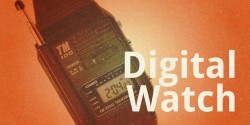Apple Music raised the hackles of musicians–especially independent artists and those signed to independent labels–this week. That conflict highlights the brewing storm over the future of free music–that is, music that listeners don’t have to pay for directly to hear. As nearly all players struggle to make money from music, I argue that independent non-commercial radio–terrestrial and online–represent two bright spots for musicians and listeners alike.
Apple stepped in it when the company decided that it would not pay royalties for any music streamed during a user’s three-month free trial of the new Apple Music service. In essence, it seemed like Apple was saying, “if we don’t get paid, neither do you.”
That policy went down like a lead zeppelin, causing many independent labels to hold off on signing contracts to offer their music through Apple Music. Apple didn’t seem much moved until the Taylor Swift spoke up last weekend. She published an open letter explaining that she’ll keep her newest album off Apple Music and that she finds Apple’s decision not to pay up during the trials to be “shocking, disappointing, and completely unlike this historically progressive and generous company.”
She went on to say that she wasn’t withholding for her own sake, but for the new and young artists who “will not be paid for (their) success” or “thought that royalties from that would get them out of debt… Three months is a long time to go unpaid, and it is unfair to ask anyone to work for nothing.”
When the Billboard chart-topping winner of seven Grammys speaks, apparently Apple listens. Apple very quickly pulled an about-face late Sunday night, with Apple VP Eddy Cue tweeting that “Apple Music will pay for artist streaming, even during customer’s free trial period.” Following this several independent label groups announced they would be signing on to Apple Music, including Worldwide Independent Network and Beggars Group.
In a blog post Future of Music Coalition CEO Casey Rae praised Swift, giving her a “high-five.” He also observed that Apple doesn’t “even need music at this point, apart from the brand benefit. So it’s pretty significant that they decided to change their policy. This will likely have a ripple effect and may end up impacting how ‘free’ is perceived on other platforms.”
It’s been sixteen years since Napster debuted, introducing a generation of internet users to abundant free music, and nineteen years since the Telecommunication Act of 1996 lifted national radio ownership limits creating a rushing wave of consolidation followed by a crushing of weight of debt on top of the country’s largest station owners. These two factors radically changed the relationship between artists, radio and listeners, taking us to where we are today.
The only thing that seems clear is that the present proliferation of free music is unsustainable. In the end I’d guess that listeners are going to have to start paying more in subscription fees to hear the music they choose, or tolerate even more ads and interruptions on nearly every non-subscription tier or platform, from Spotify and YouTube to Pandora and commercial radio.
Non-commercial broadcast radio and independent internet stations may be two shelters in this storm. One reason is that these services tend to play a much wider variety of music than their commercial brethren, offering tremendously more exposure and promotion to artists in exchange for their broadcasts.
Another reason is that non-commercial and independent stations also tend to have closer relationships with listeners. These relationships are financial, relying upon listener donations for funding, but without profiting at the expense of artists. The relationship building also carries over to the artists played on stations, who have a chance to build stronger rapport with audiences and new fans.
The Free Music Archive–which we featured on the podcast–is one example of such collaboration, with indie stations and artists coming together to curate great music. Another is KEXP’s recently announced “Under the Needle” series of in-studio performances to be syndicated to non-commercial stations. There are also creative opportunities for artists and stations to cooperate and share revenue with the sale of music, merchandise and concert tickets via their websites, or through offering premium gifts to donors.
This was basic thrust of the “immodest proposal” I published eighteen months ago, suggesting indie artists and stations band together more formally. Though such efforts are still small in scope, the examples I give show that the potential is real.
Listeners benefit because they get to hear often-expertly curated music created by passionate artists. And, perhaps they have access to extra content like live performances, interviews and artist DJ sets, frequently alongside tickets to concerts, festivals and other events. Ideally, listeners forge a relationship with their favorite stations, the DJs and the musicians that encourages them to support the people who provide them with so much great culture and entertainment.
Will every listener buy concert tickets, tell friends about new bands or donate to station pledge drives? No. But the rise in crowdfunding and other fan-supported ventures indicate there’s a good shot that enough listeners will put their money where their ears are.
I’m not arguing that the indie artist – indie station nexus will create stars with popularity and sales equivalent to Taylor Swift. Rather, this is a promising path for a wide middle class of artists and stations that can together achieve sustainability rather than have to gamble with debt and insolvency for the chance to become superstars.
Now is the time for stations to be sure artists know what they can offer, and then also be sure listeners are able to tune in, whenever and wherever they are. That second aspect, of course, is a whole other argument for another day.



